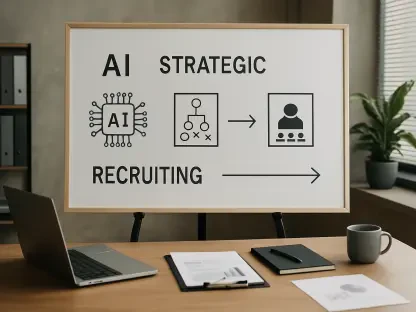What happens when a new hire steps into a role full of promise, only to find themselves lost in a maze of unclear expectations and minimal support within the first week? This scenario plays out in countless organizations, often leading to disengagement and early exits. The onboarding process, far from being a mere formality, holds the power to shape an employee’s journey—determining whether they thrive or quietly plan their departure. This critical first impression sets the tone for trust, productivity, and long-term commitment. Diving into this topic reveals not just the pitfalls of poor onboarding but also the transformative potential of getting it right.
Why Onboarding Sets the Stage for an Employee’s Future
The initial days at a new job are more than just paperwork and introductions—they are a defining moment that can predict an employee’s trajectory. A structured entry into the workplace builds confidence, aligns goals, and fosters a sense of belonging, creating a foundation for sustained engagement. When done effectively, this early experience signals to new hires that their role matters and that the organization is invested in their growth.
Conversely, a disorganized or rushed introduction can sow seeds of doubt, leaving employees questioning their decision to join. Studies indicate that nearly a third of new hires consider leaving within the first 90 days when faced with unclear direction. This pivotal period, if mishandled, risks turning enthusiasm into frustration, highlighting the stakes of crafting a meaningful first impression.
The Hidden Costs of Ineffective Onboarding in Today’s Workplace
Beneath the surface of high turnover lies a costly truth: inadequate onboarding silently drains resources and morale. With the average cost of replacing an employee pegged at $4,700, organizations face a steep price for failing to integrate new talent effectively. Beyond financial losses, the ripple effect on team dynamics and productivity adds to the burden, often going unnoticed until exit interviews reveal the root cause.
In an era where talent competition is intense, employees expect more than a paycheck—they seek growth, connection, and purpose from day one. A Gallup survey underscores the gap, showing that only 12% of workers feel their company excels at onboarding. This disconnect between recruitment promises and the reality of a new hire’s experience erodes trust, making it clear that outdated or superficial processes are a liability in today’s fast-paced environment.
Unpacking the Direct Link Between Onboarding and Retention
Delving into the mechanics, onboarding directly influences retention through critical factors like expectation alignment, early engagement, and skill-building. When new hires receive clear guidance on their role and how success is measured, they are more likely to feel anchored and motivated. Industry data reveals that structured programs increase the likelihood of employees staying for at least three years by 58%, proving the long-term impact of early support.
Real-world examples bring this to life. A sales organization implemented a “Ramp to Revenue” program, blending weekly coaching with real-time performance tracking, resulting in 60% of reps closing deals before hitting formal quotas. Similarly, a healthcare provider adopted scenario-based training, enhancing patient safety outcomes while boosting new staff confidence. These cases show how tailored onboarding not only retains talent but also accelerates their path to meaningful contributions.
The absence of such structure, however, often leads to rapid disengagement. Without regular feedback or relevant learning, employees can feel isolated or unprepared, prompting them to look elsewhere. This stark contrast between intentional and neglectful approaches underscores onboarding as a linchpin for both retention and workplace success across diverse sectors.
Voices from the Field: Insights on Onboarding Experiences
To ground this discussion, perspectives from experts and firsthand accounts shed light on onboarding’s real impact. Learning and development leaders emphasize that treating onboarding as a strategic priority, rather than an HR checkbox, transforms outcomes. One manager noted the difference between new hires flourishing under consistent coaching and others struggling through generic, one-size-fits-all orientations, highlighting the value of personalized attention.
Technology also plays a growing role, as seen in a case where an AI-driven platform tailored learning paths to individual roles, boosting engagement by 75% in its pilot phase. A senior HR professional remarked, “Continuous learning isn’t a luxury—it’s the backbone of retention in a changing workplace.” Such insights, paired with real stories of transformation, reinforce that effective onboarding balances human connection with innovative tools to drive lasting results.
These varied experiences point to a shared truth: onboarding must evolve beyond static manuals to become a dynamic, supportive journey. Whether through managerial involvement or cutting-edge solutions, the focus remains on empowering employees to navigate their roles with clarity and purpose, ensuring they feel valued from the outset.
Building a Better Onboarding Experience: Practical Steps for Success
Turning theory into action, organizations can revamp onboarding by adopting a 30/60/90-day roadmap with defined milestones and measurable goals. This framework ensures new hires progress with purpose, supported by regular check-ins to address challenges and refine skills. Aligning tasks with actual job demands during this period helps bridge the gap between expectation and reality, fostering early wins.
Beyond timelines, involving managers as active coaches rather than distant overseers makes a significant difference. Interactive experiences, such as hands-on simulations, prove more effective than passive materials, while an “everboarding” mindset—continuous learning tied to business outcomes—keeps development relevant. Celebrating skill achievements and updating content based on employee feedback further cultivate a culture of growth and adaptability.
Practical steps also include leveraging technology for personalized support and ensuring a sense of belonging through team integration. These efforts collectively transform onboarding into a retention powerhouse, equipping new talent to thrive. By prioritizing these strategies, companies can create an environment where employees not only stay but also contribute meaningfully to shared goals.
Reflecting on the journey through countless workplaces, the evidence became undeniable: onboarding shaped destinies, for better or worse. Stories of new hires who found their footing through structured support contrasted sharply with those who drifted away due to neglect. The lesson was clear—investing in those first critical months paid dividends in loyalty and performance. Moving forward, the challenge lies in sustaining this momentum, ensuring that every onboarding experience evolves with the workplace itself. Organizations must commit to refining these processes, using data and feedback to anticipate needs and foster connection, paving the way for a future where every employee starts strong and stays engaged.









